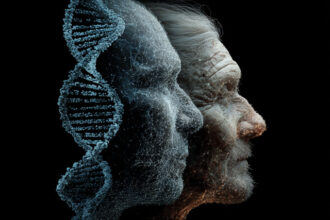Scientists have unveiled significant insights into the communication between neurons during decision-making processes and the strengthening of neural connections that reinforce choices. Conducted on mice and spearheaded by neuroscientists from Harvard Medical School, this pioneering study employed a mix of structural, functional, and behavioural analyses to delve into how neuron-to-neuron connections underpin decision-making. Published on February 21 in Nature, the findings mark a crucial step in understanding the complex neural interactions that facilitate decision-making.
The study was co-authored by Wei-Chung Allen Lee, Christopher Harvey, and Stefano Panzeri. Lee noted the importance of unravelling the brain’s organizational structure in decision-making, which needs better understood. In their experiments, mice navigating a maze had to choose directions to locate rewards, revealing that decisions to turn left or right triggered sequences of neuron activations, suppressing neurons associated with the alternative direction. This specific interaction between neuron groups is pivotal in shaping decisions by deactivating alternative pathways.
The genesis of this research was an unexpected collaboration between Lee and Harvey, forged during a fire drill. This partnership combined Lee’s expertise in connectomics, which maps neural connections, with Harvey’s background in behavioural studies using virtual reality mazes to track decision-making in mice. This interdisciplinary approach allowed them to explore the complex roles and connectivity of various neuron types involved in decision-making processes.
Their focus was the posterior parietal cortex, described by Lee as an “integrative hub” that processes multisensory information to aid decision-making. The study sought to identify simple connectivity rules that the brain might use to facilitate decisions. Harvey’s lab recorded neural activities as mice navigated a virtual reality T-shaped maze, while Lee’s lab mapped the structural connections among the same neurons using advanced microscopy techniques.
The researchers successfully differentiated between excitatory neurons, which activate other neurons, and inhibitory neurons, which suppress activity. They found that when a mouse decided to turn right, specific excitatory neurons were activated, which stimulated inhibitory neurons that reduced activity in the neurons associated with turning left and vice versa. Lee suggested that this neural circuitry could help stabilize decisions by suppressing choices, a mechanism that might be conserved across species, though further confirmation in humans is needed.
The team is eager to explore neuronal connections in other brain regions involved in decision-making. Their ongoing work aims to uncover more connectivity rules that could further elucidate the complex processes through which the brain makes decisions, hoping to build a broader understanding of neural dynamics in maritime and other types of decision-making.
More information: Aaron T. Kuan et al, Synaptic wiring motifs in posterior parietal cortex support decision-making, Nature. DOI: 10.1038/s41586-024-07088-7
Journal information: Nature Provided by Harvard Medical School








